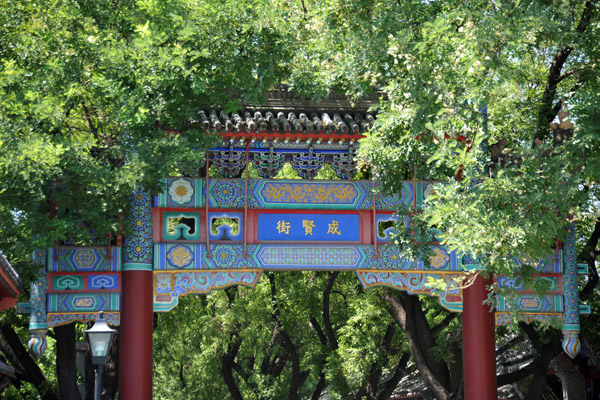
Shady Guozijian Street which connects the Lama Temple with the Confucius Temple |
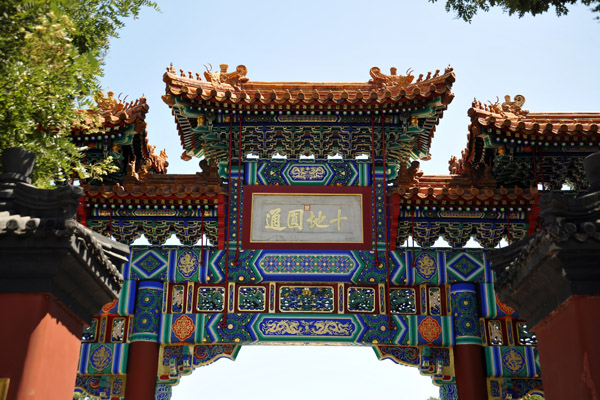
The Lama and Confucius Temples are around 4 km NE of the Forbidden City |
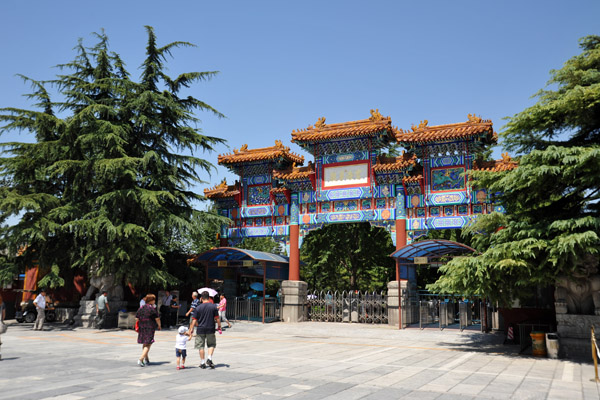
First gate to the Lama Temple, Beijing |
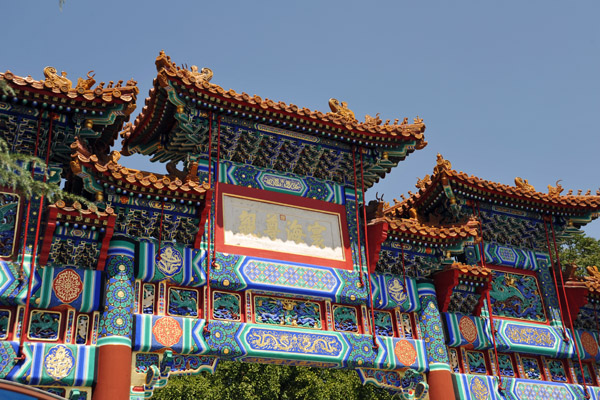
First gate to the Yonghe Lama Temple, Beijing |

Guardian Lion, Lama Temple, Beijing |
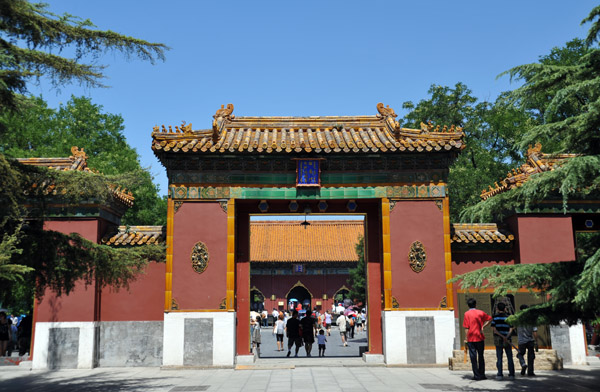
Second gate to the Yonghegong Tibetan Buddhist Lama Temple, Beijing |
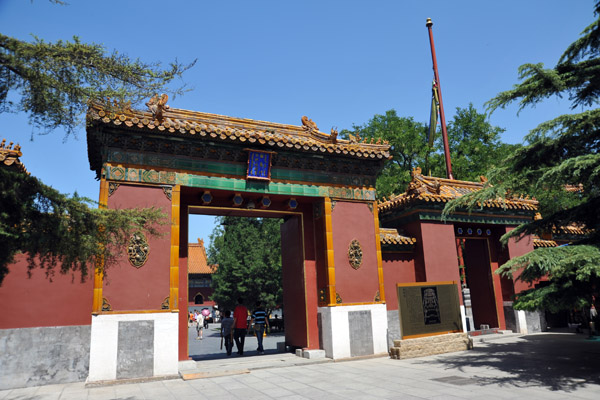
Beijing's Tibetan Lama Temple established in 1722 during the reign of Qing Emperor Yongzheng |

Inscription on the Lama Temple gate in Chinese, Tibetan and Manchu |
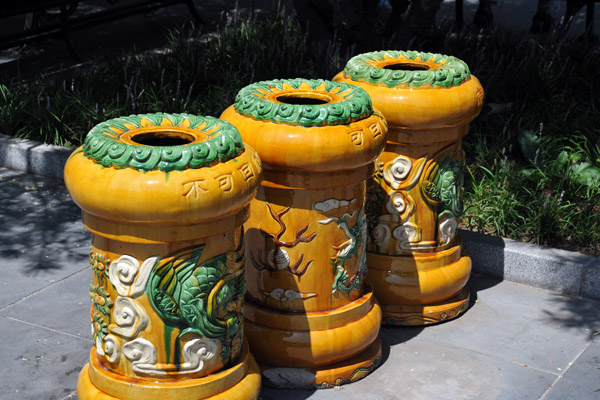
Decorative trash cans at the Lama Temple |
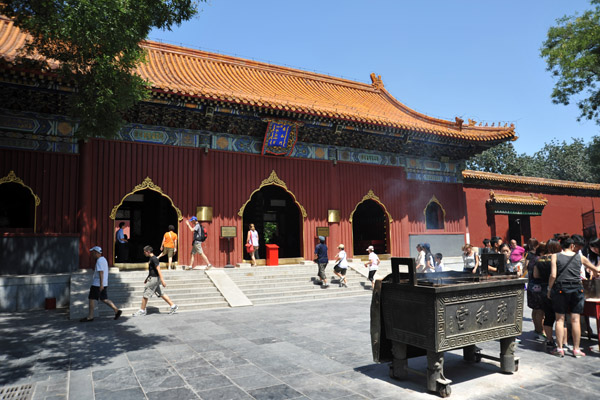
First Courtyard with the Hall of the Heavenly Kings, the southernmost of the Lama Temple's 5 main halls |
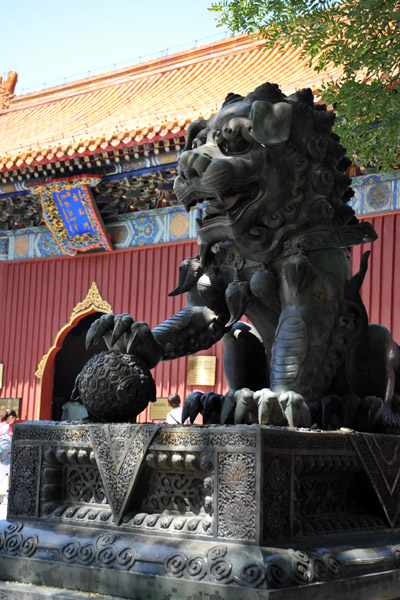
First Courtyard with the Hall of the Heavenly Kings |
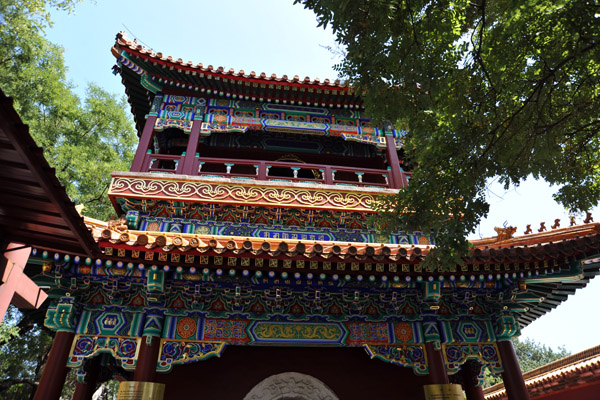
Pavilion in the First Courtyard, Beijing Lama Temple |
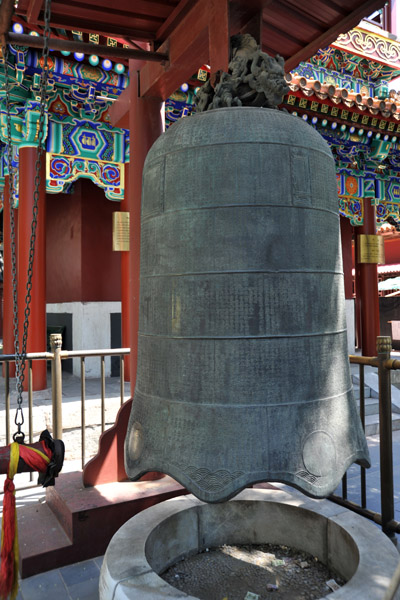
Large Bronze Bell in the First Courtyard |
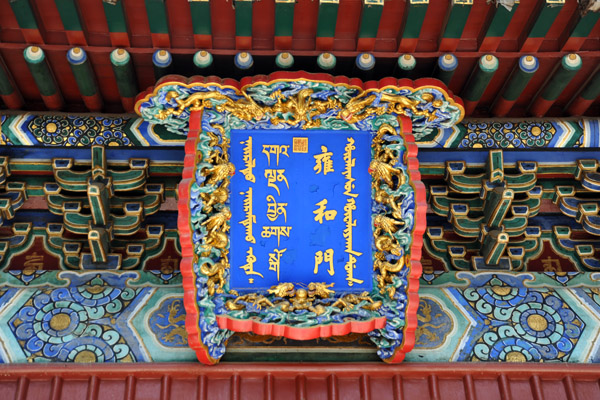
Inscription over the Hall of the Heavenly Kings, Beijing Lama Temple |
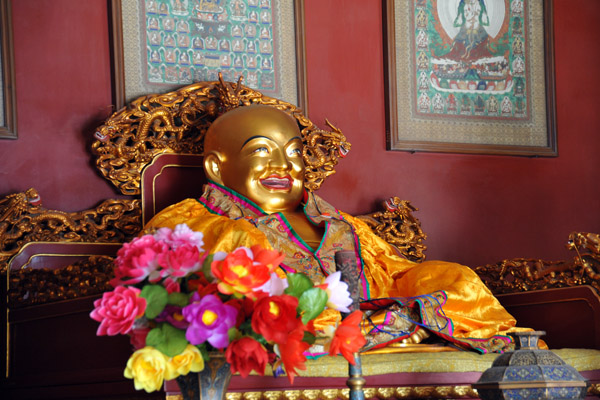
Laughing Buddha, Hall of the Heavenly Kings |

The Heavenly King of the West, Guăng Mù Tiānwáng |
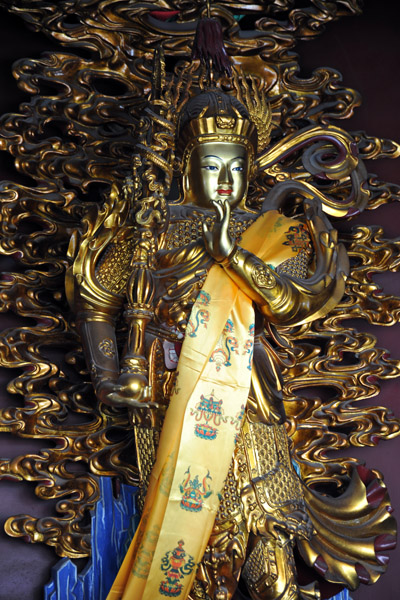
Standing sculpture, Beijing Lama Temple |
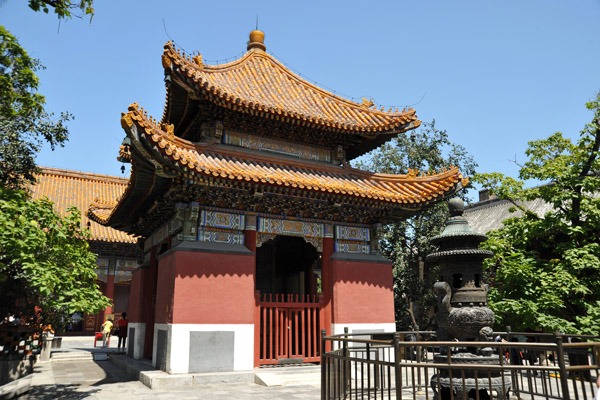
The Second Courtyard, Beijing Lama Temple |
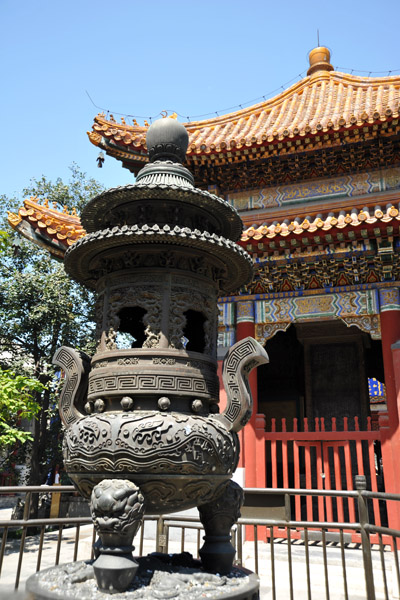
Bronze censor in the Second Couartyard |
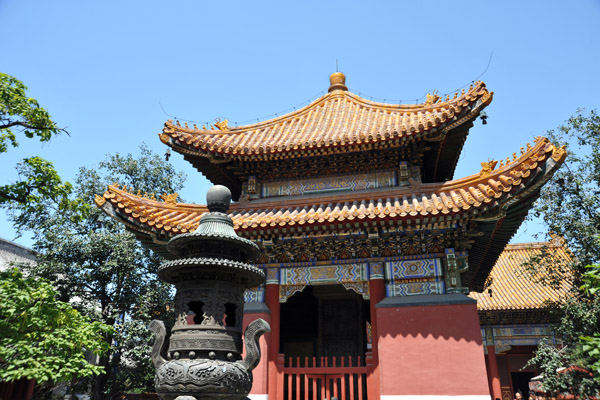
Pavilion in the Second Courtyard, Beijing Lama Temple |
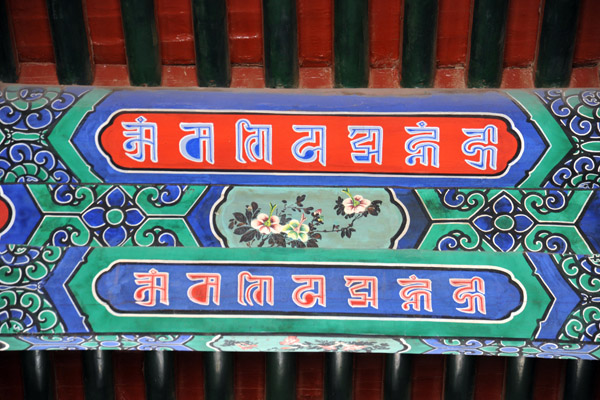
Painted support beam with what is probably sanskrit letters |
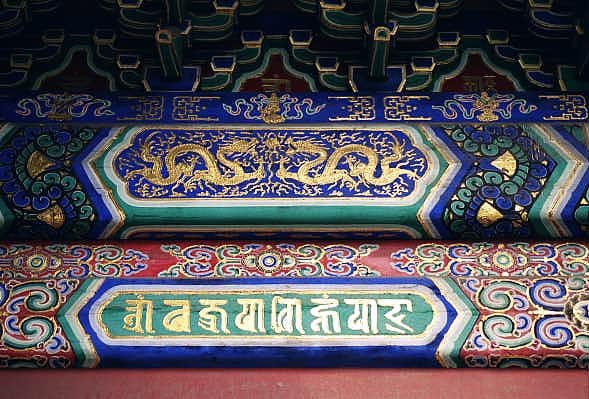
Detail of roof beam, Lama Temple, Beijing |
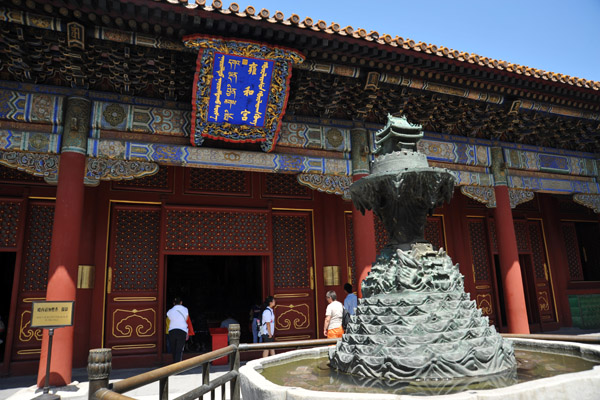
Hall of Harmony and Peace (Yonghegong), 1694 |
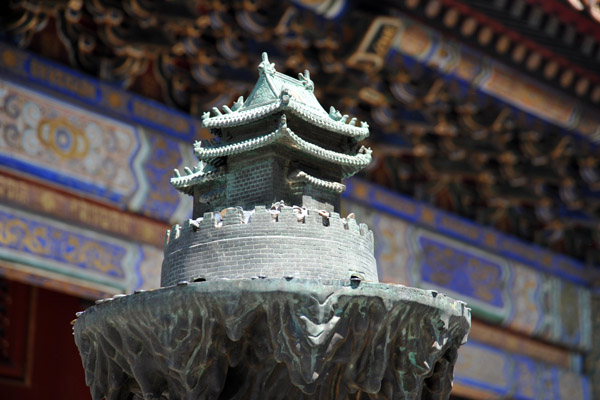
Bronze sculpture of a fortress tower in front of the Hall of Harmony and Peace |
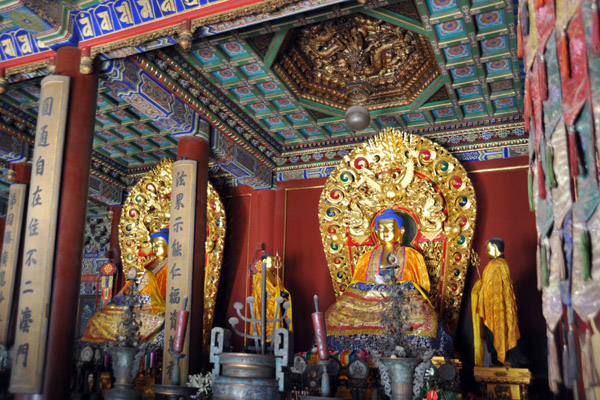
Hall of Harmony and Peace - Buddhas of the Three Ages (future, present, past) |

Hall of Harmony and Peace |
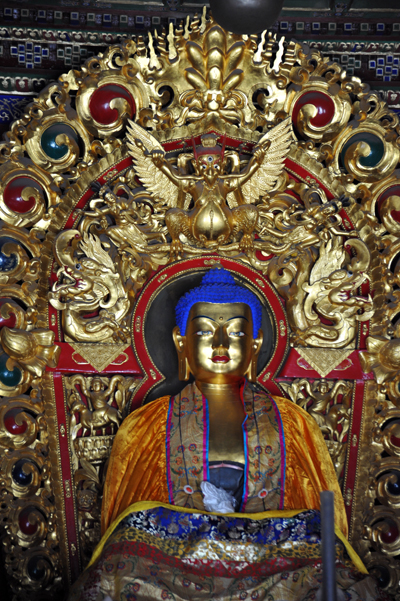
Shakyamuni (Gautama) - the Present Buddha |

Maitreya Buddha, the Buddha of the Future - Yonghegong |
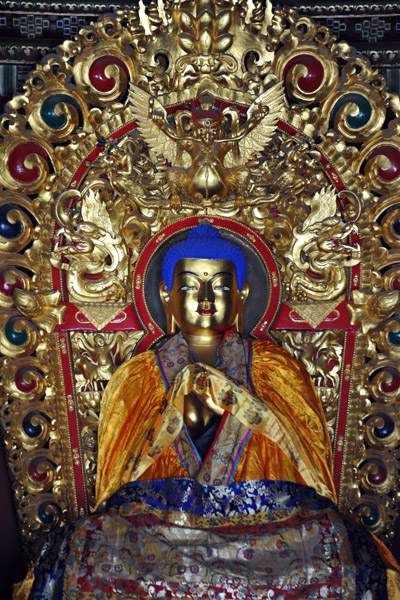
Kasyapa Matanga, the Buddha of the Past - Yonghegong |
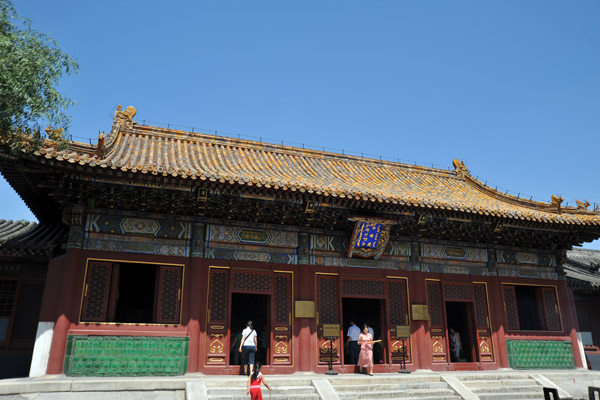
Hall of Everlasting Protection (Yongyoudian), the 3rd main hall, Beijing Lama Temple |
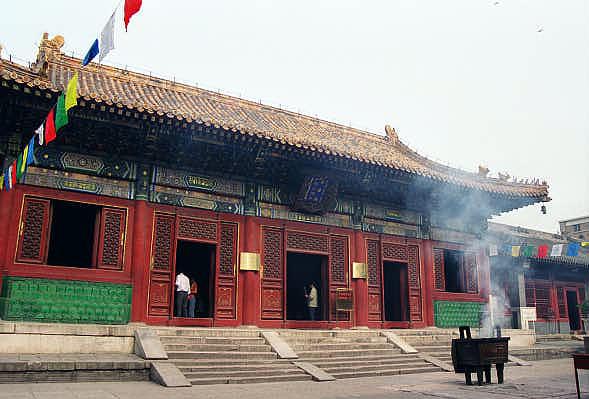
Hall of Everlasting Protection (Yongyoudian), Beijing Lama Temple |
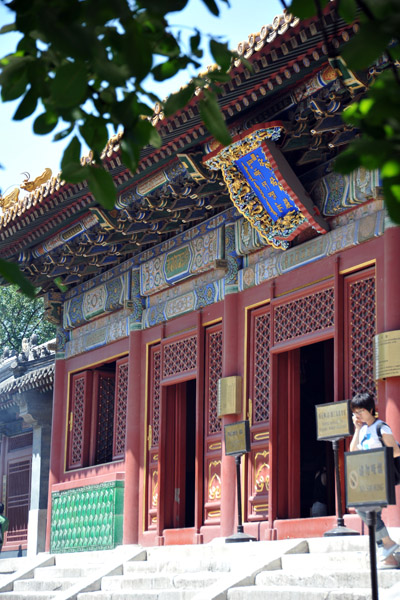
Hall of Everlasting Protection |

Hall of Everlasting Protection, Amitayus - the Longevity Buddha |
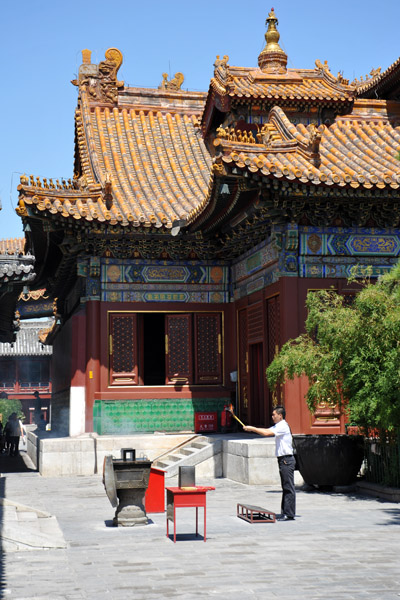
Hall of the Wheel of the Law, Beijing Lama Temple |
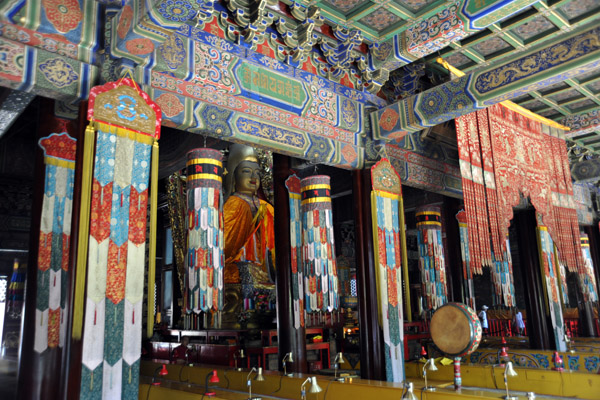
Tsongkhapa, founder of the Geluk-pa School (Yellow Hats) in the Hall of the Wheel of the Law (Falundian) |
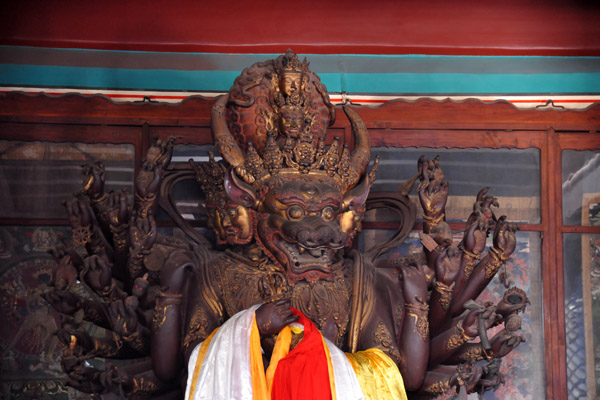
Esoteric Hall, 1744 - Fourth Courtyard, Beijing Lama Temple |
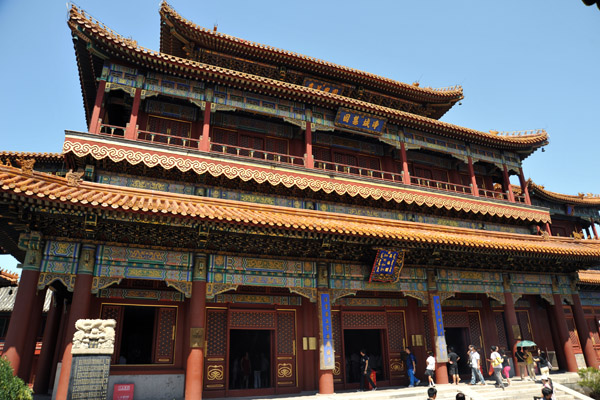
Pavilion of Ten Thousand Happinesses, the last of the main halls of Yonghe Lama Temple, Beijing |
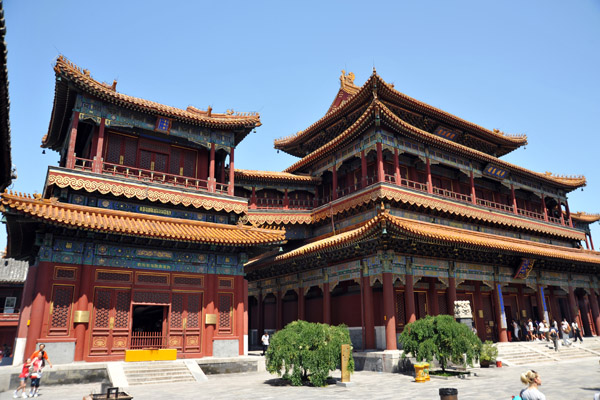
The Fifth Courtyard, Beijing Lama Temple |
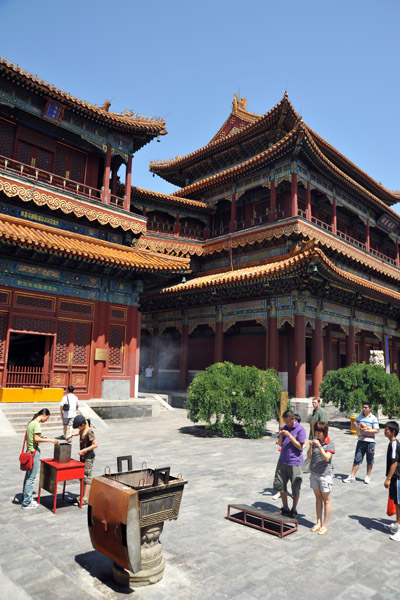
The Fifth Courtyard - Yansui Pavilion and the Pavilion of Ten Thousand Happinesses |
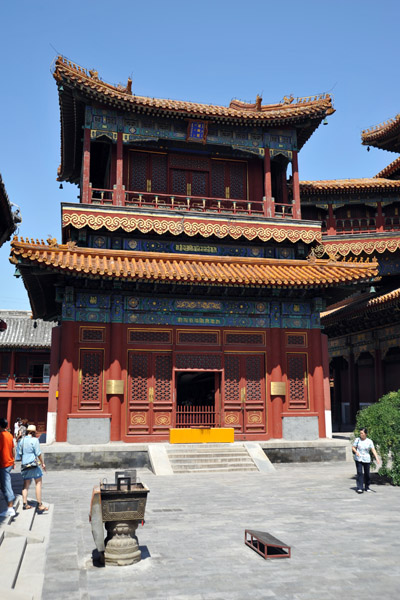
The Fifth Courtyard - Yansui Pavlion, 1748-1750 |
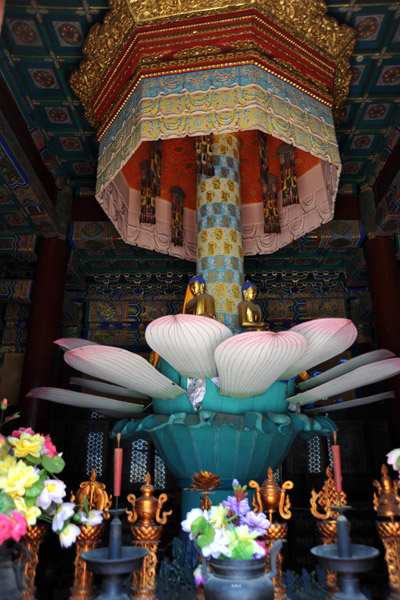
Lotus Throne with Longevity Buddhas - Yansui Pavilion |
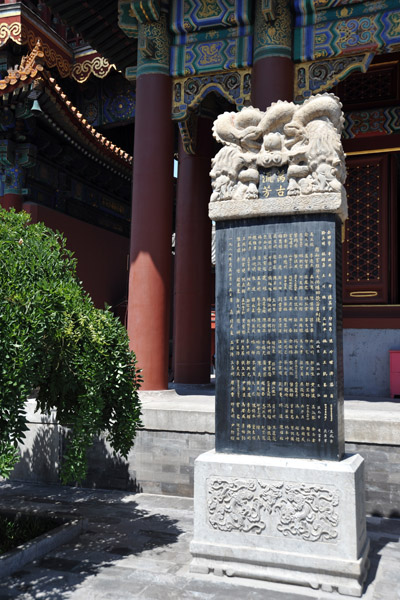
Stelae in the Fifth Courtyard, Lama Temple |
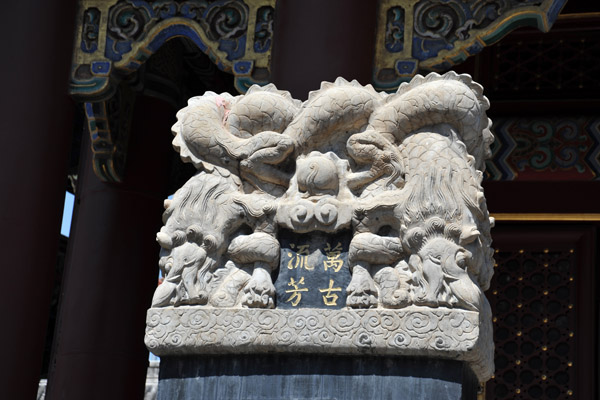
Carved capital of the Fifth Courtyard Stelae |
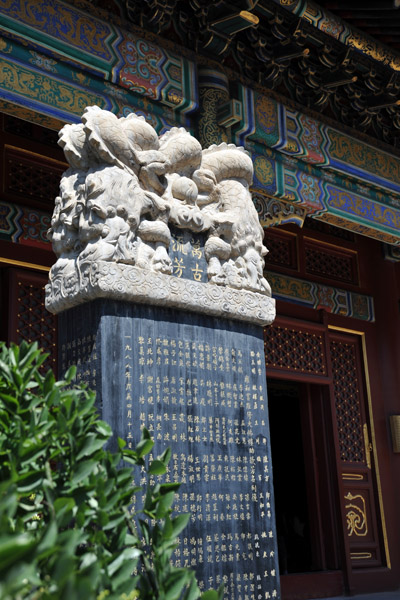
Stelae in the Fifth Courtyard, Lama Temple |
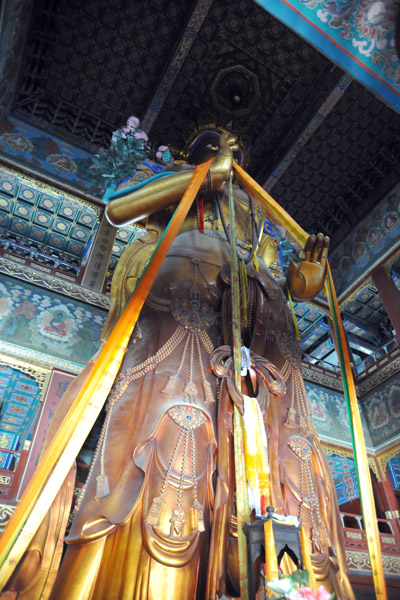
26m statue of Maitreya, the Future Buddha, carved from a single white sandalwood tree |
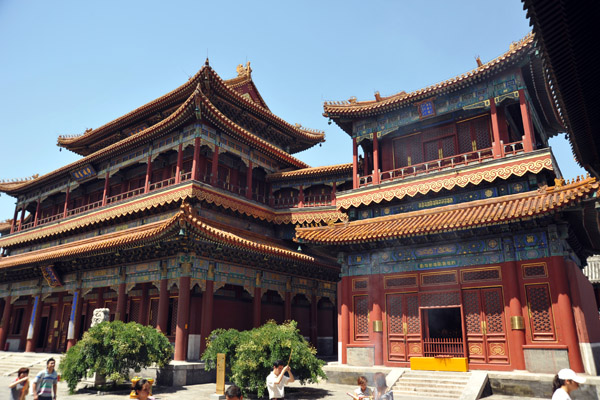
Yongkang Pavilion to the right of the Hall of 10,000 Happinesses |
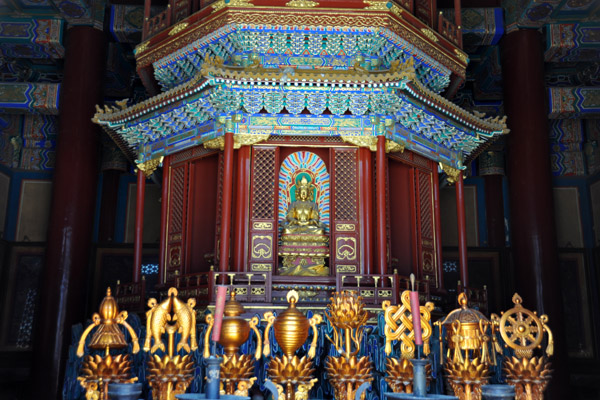
Dharmacakra-Pravartana with the Longevity Buddha, Yongkang Pavilion, 1748-1750 |

Fifth Courtyard of the Beijing Lama Temple with Tibetan Prayer Flags |
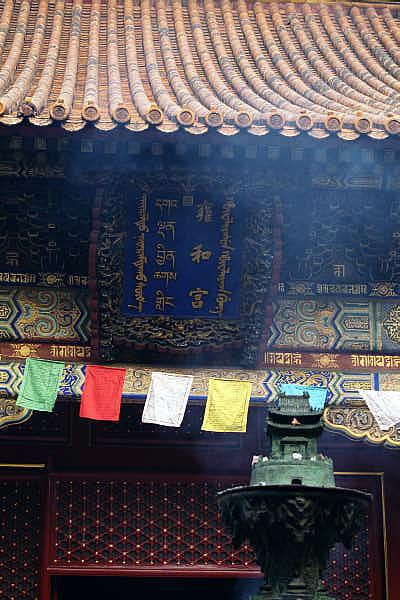
Lama Temple, Beijing |
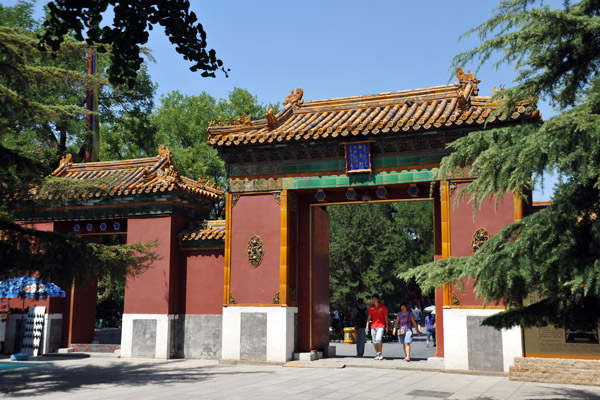
Exiting the Beijing Lama Temple |
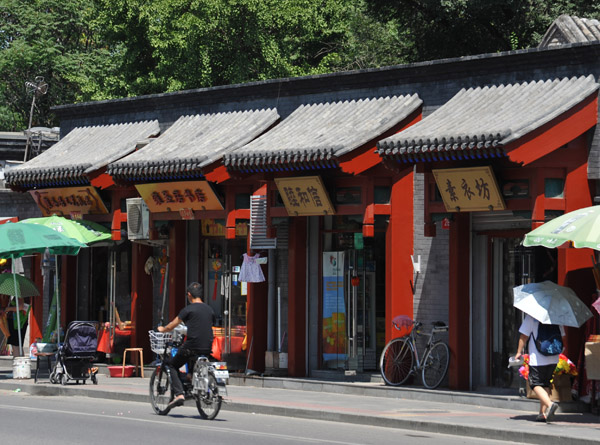
Touristy shops on the street outside the Lama Temple |
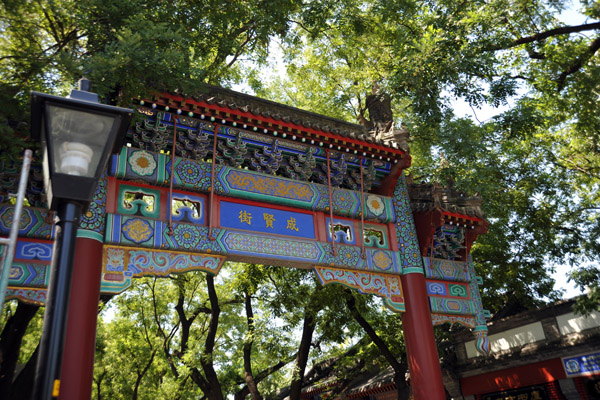
Shady Guozijian Street in Beijing leads from the Lama Temple to the Confucius Temple |

国子监街 - Guózǐjiàn Jiē - Imperial College Street |
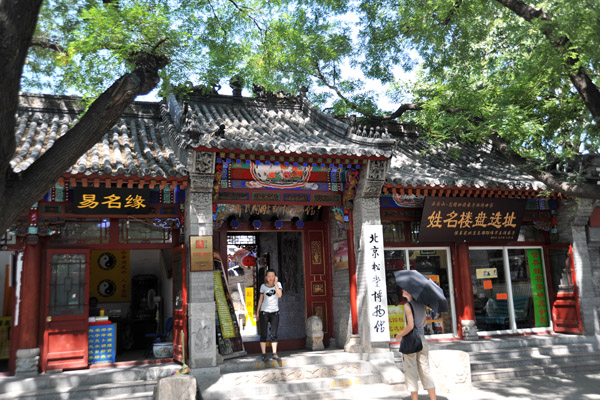
Song Tang Zhai Museum of Traditional Chinese Folk Carving, Guozijian Street |
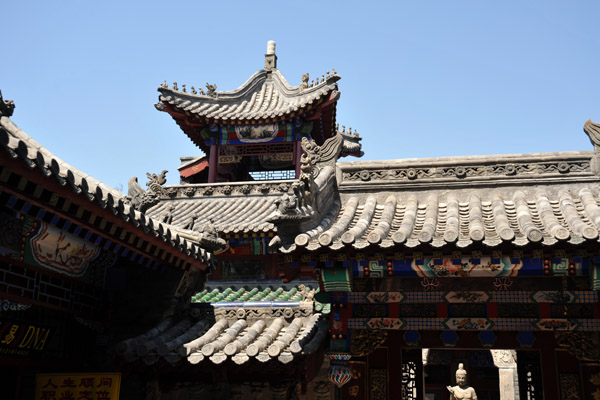
The Song Tang Zhai Museum preserves one of Beijing's traditional residences |
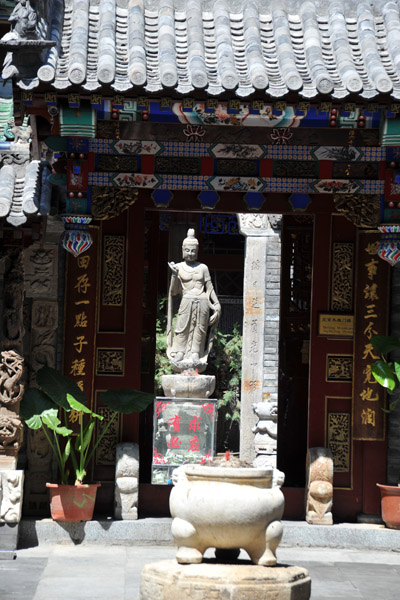
Courtyard of the Songtang House |
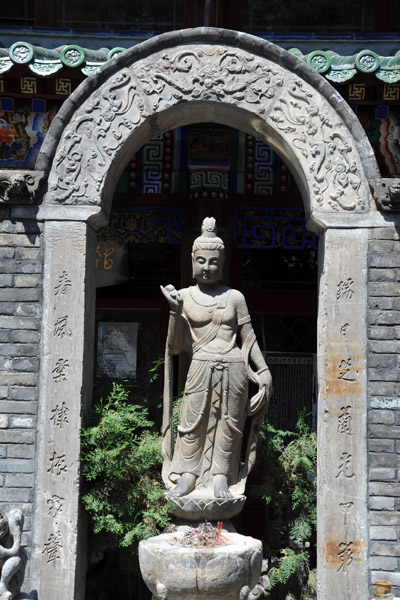
Guyanyin in the courtyard of the Songtang House |

Guyanyin in the courtyard of the Songtang House |
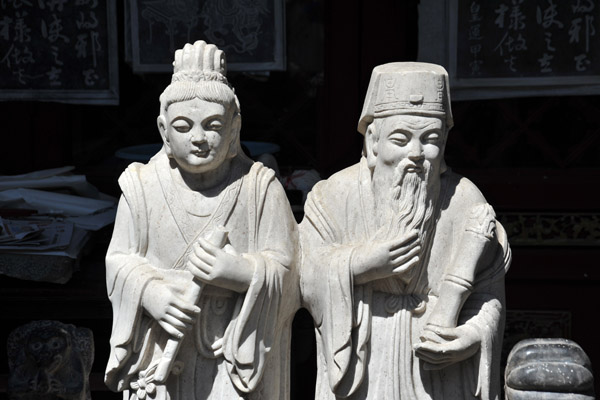
The Song Tang Museum preserves parts saved from demolished buildings in Beijing |
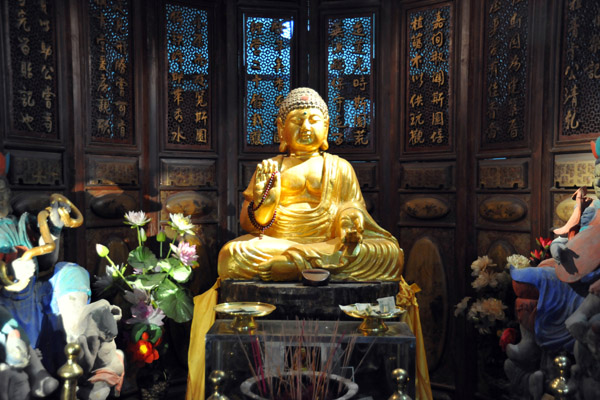
Song Tang Zhai Museum of Traditional Chinese Folk Carving |
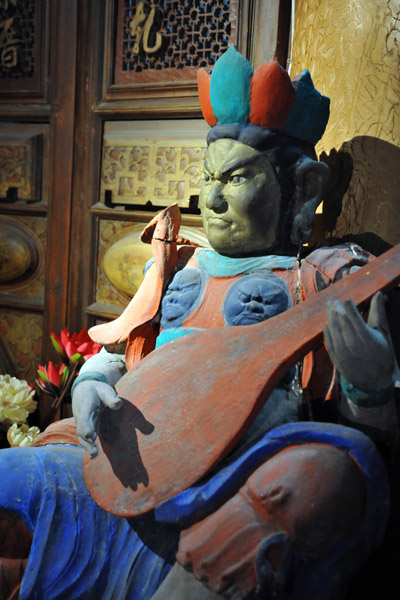
Song Tang Zhai Museum, Beijing |

Song Tang Zhai Museum |
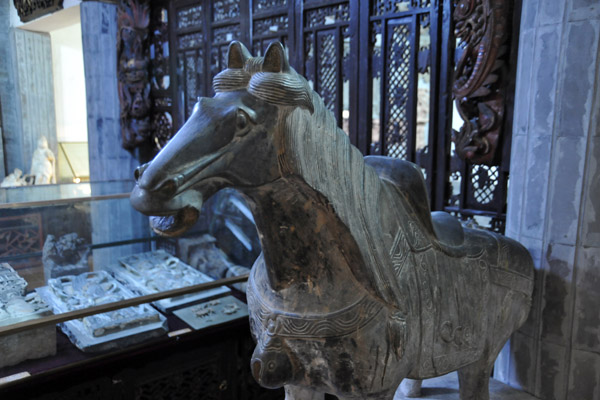
Song Tang Zhai Museum |
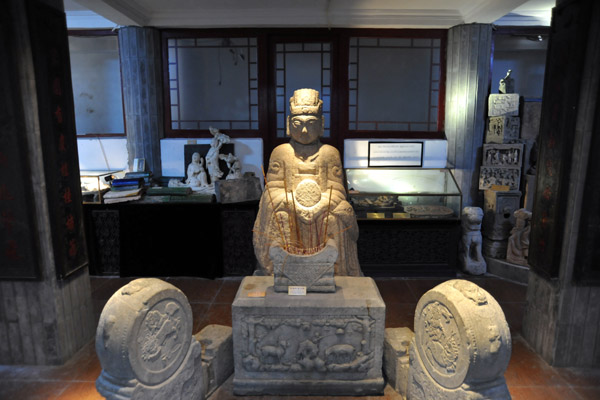
Song Tang Zhai Museum |
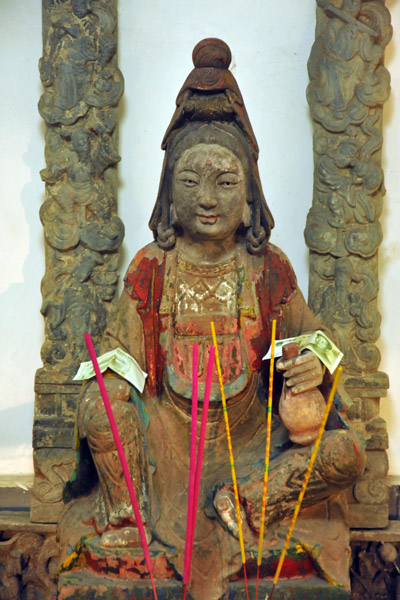
Song Tang Zhai Museum |

Song Tang Zhai Museum |
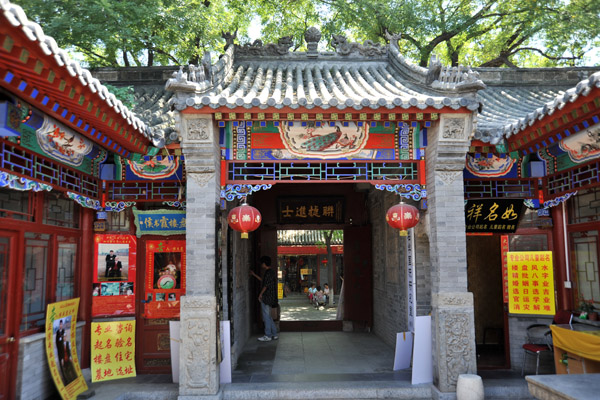
Guozijian Street has maintained much of its traditional character |
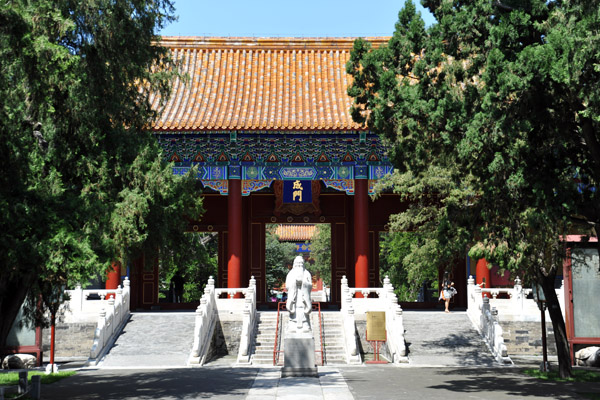
The Confucius Temple of Beijing was founded in 1302 during the Yuan Dynasty |
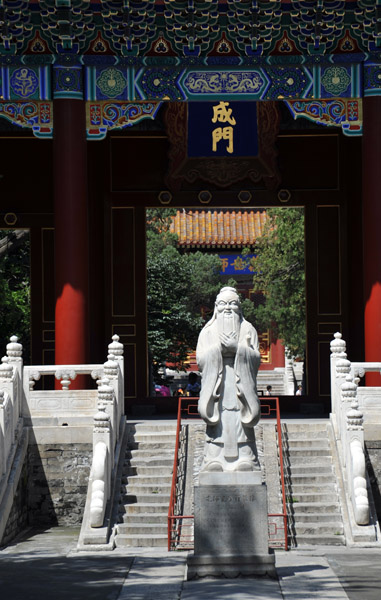
First Courtyard, Beijing Confucius Temple |
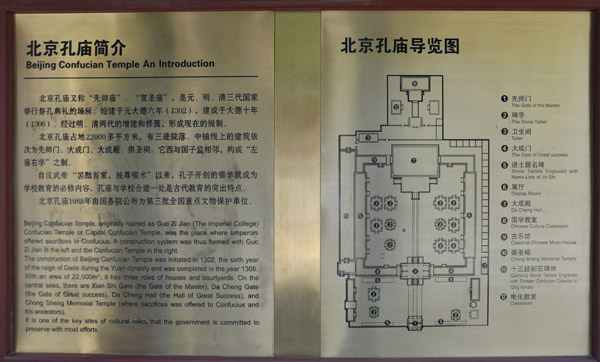
Information and Map of the Beijing Confucius Temple |
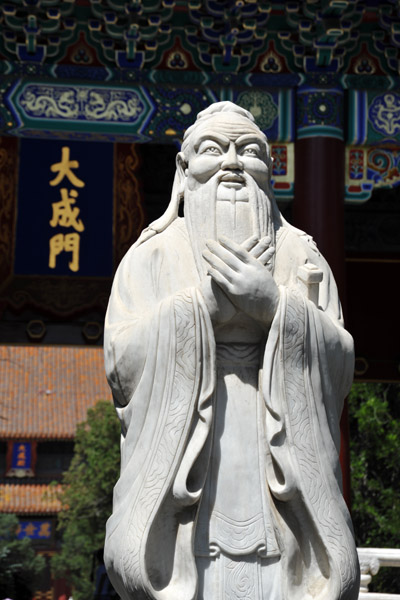
Statue of Confucius, Beijing |
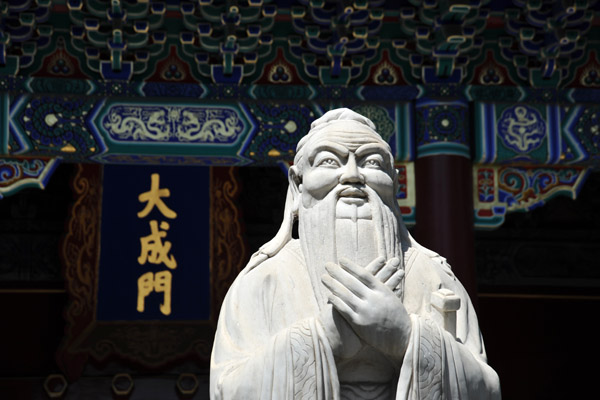
The teachings of Confucius (551-479 BC) formed the basis of state ideology from the Qin Dynasty (221-207 BC) up to 1911 |

Gate of Great Success (Accomplishment) 大成门 |
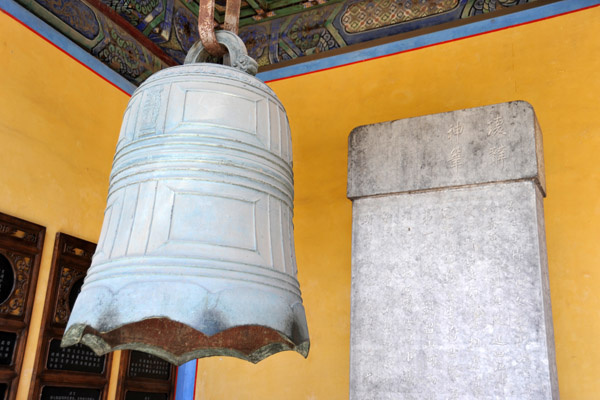
Bell of the Gate of Great Success |
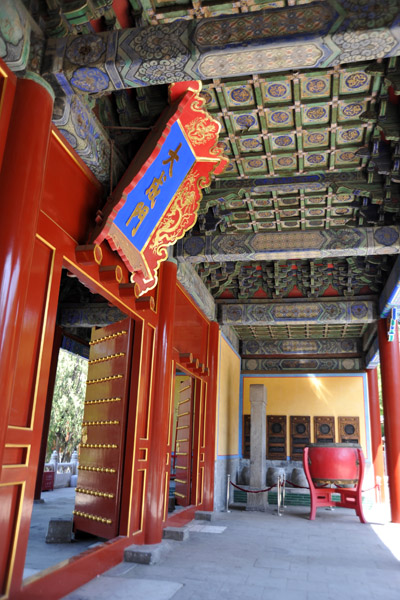
Gate of Great Success leading to the Second Courtyard |

Pavilions of the Stone Tables in the Second Courtyard, Beijing Confucius Temple |

Stone Stele, Confucian Temple, Beijing |
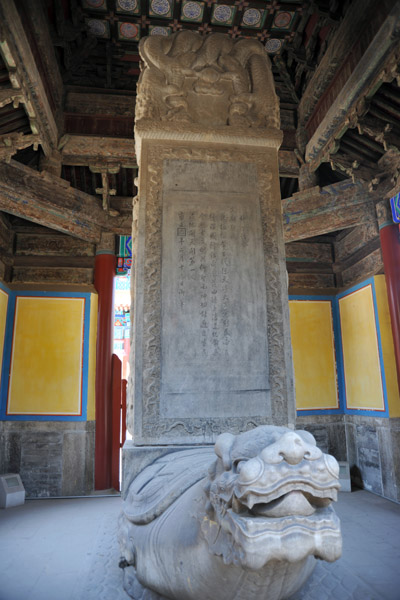
Stele of a poem eulogizing Confucius by Emperor Yongzheng, 1728 |
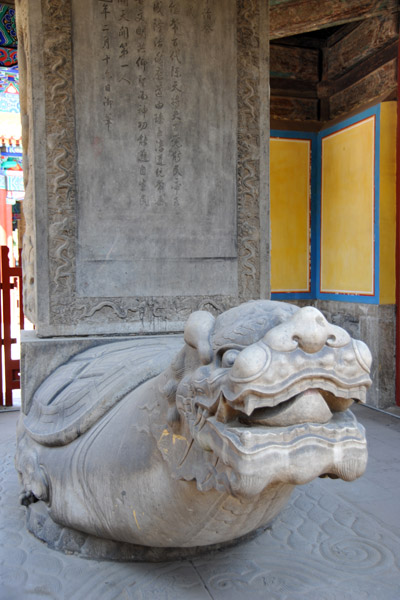
赑屃 (bìxì) - dragon-headed tortoise used to support Chinese stelae |
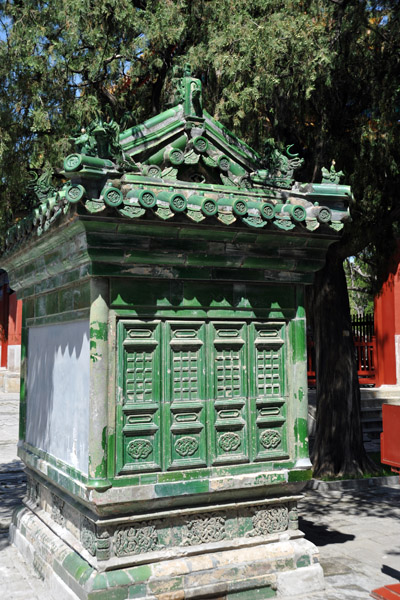
Furnace used for sacrifices and offerings, Confucius Temple |
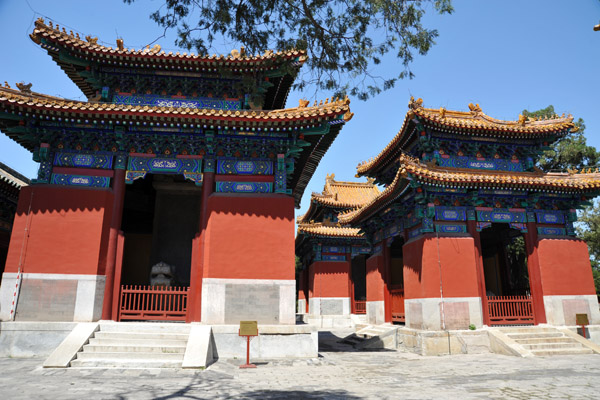
14 pavilions, most in the Second Courtyard, house stelae recording important historical events |

Pavilion protecting the stone stelae of the Confucius Temple |
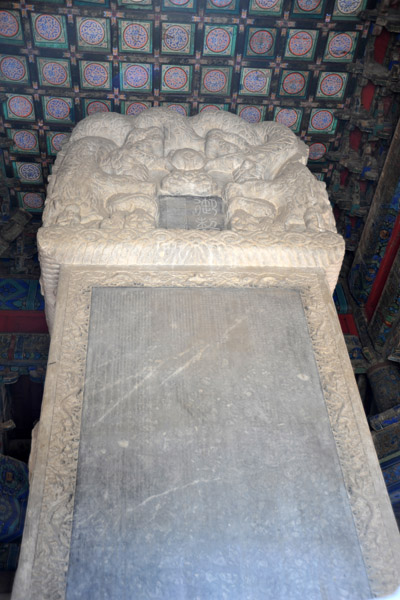
Stone tablet marking the successful suppression of the Hui Riots in 1759 |
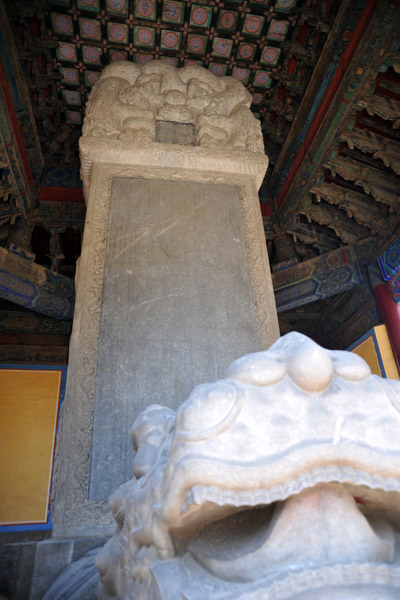
The Hui are a Muslin minority in Western China |
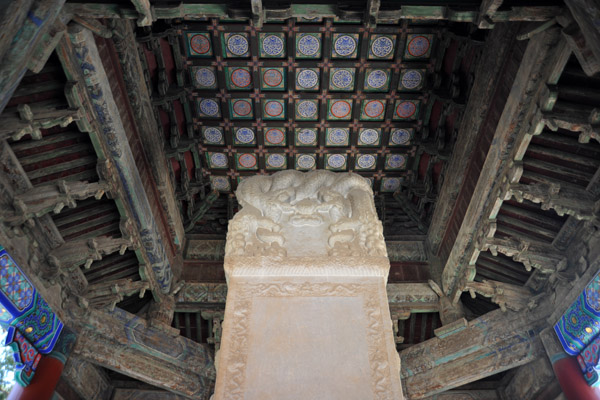
Dragon-topped stele with detail of the pavilion ceiling, Temple of Confucius |
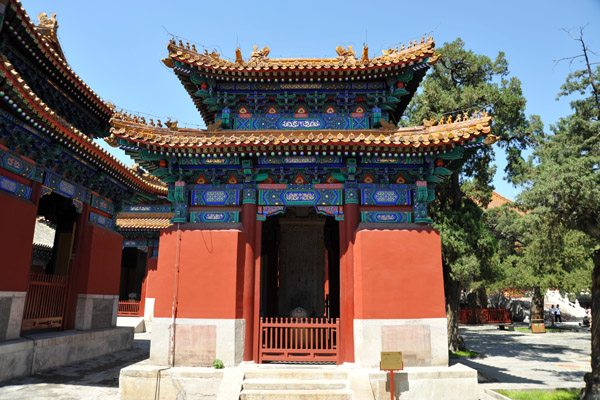
Pavilion in the Second Courtyard, 1689 |
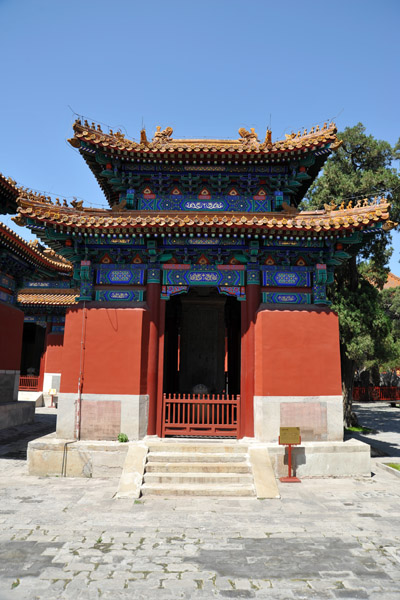
Second Courtyard - Beijing Confucius Temple |
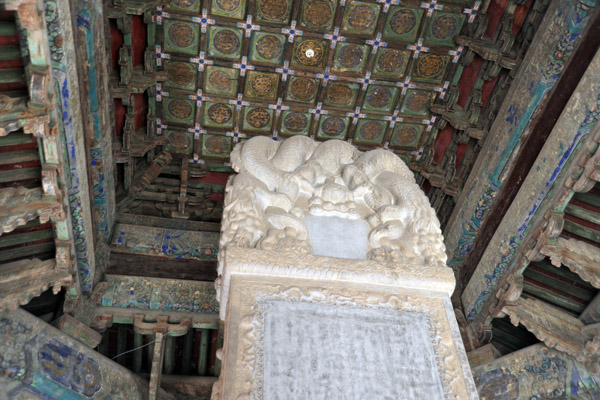
Stone tablet erected in 1689 by Emperor Kangxi eulogizing Yan-zi, Zeng-zi, Zisi-zi and Mencius, 4 disciples of Confucius |
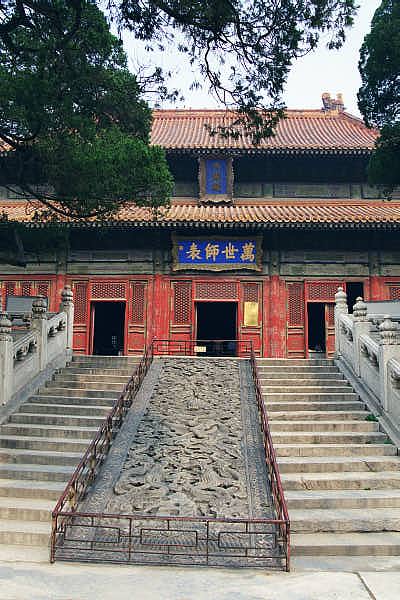
Confucian Temple, Beijing |
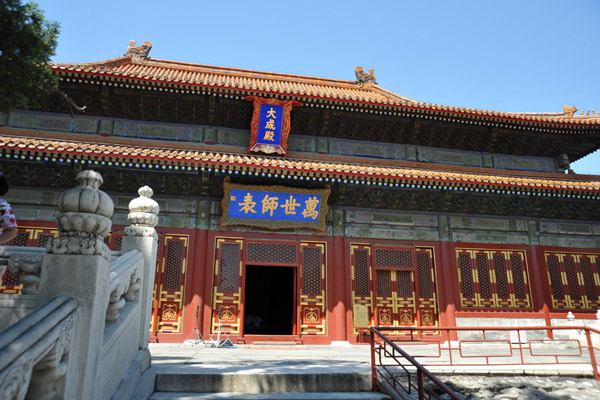
Da Cheng Hall - the Hall of Great Accomplishments (大成殿), Confucius Temple |
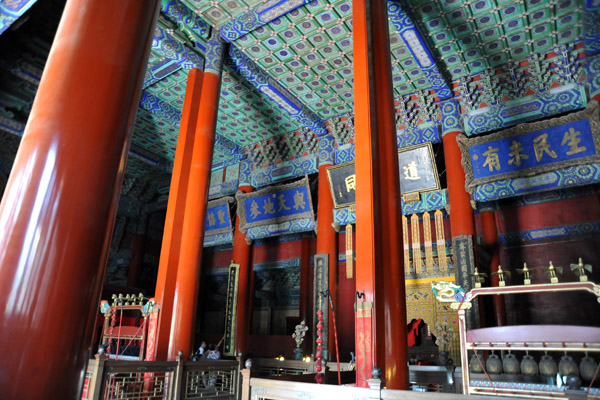
Inside the Hall of Great Accomplishment, Beijing Confucius Temple |
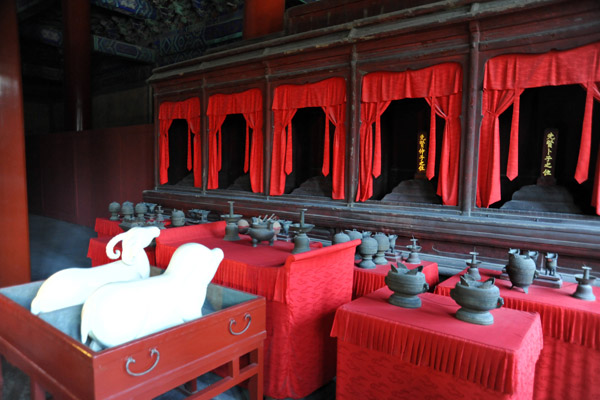
Shrines to the Twelve Philosophers, Da Cheng Hall |
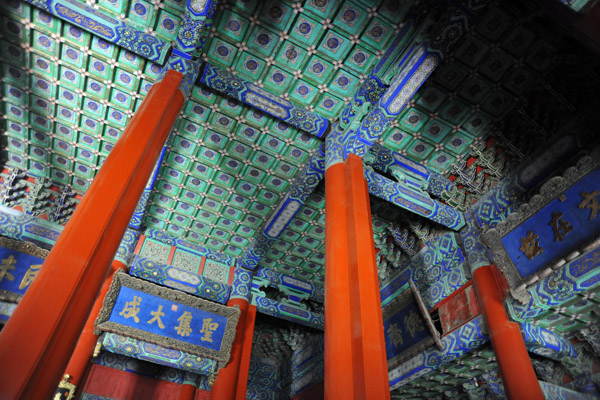
Inside the Hall of Great Accomplishment, Beijing Confucius Temple |
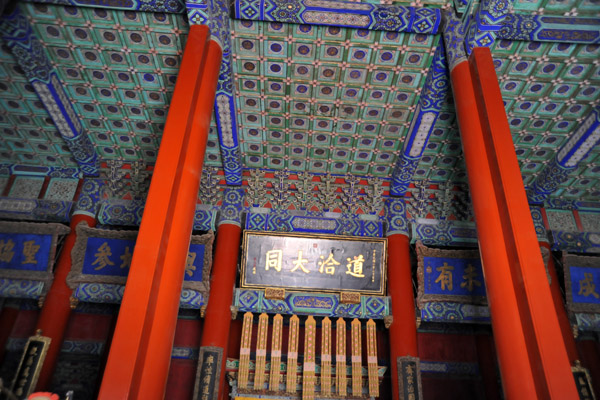
Da Cheng Hall, Beijing Confucius Temple |
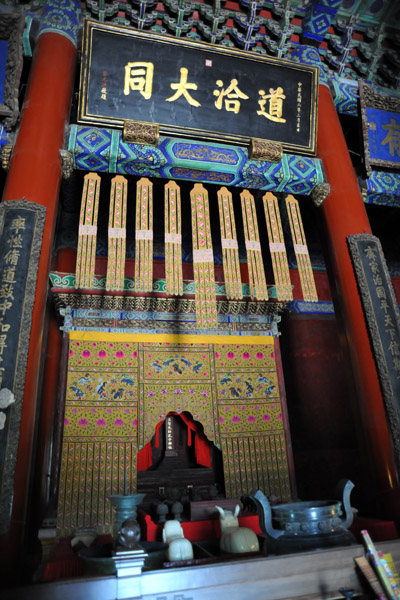
The main memorial tablet of Confucius |
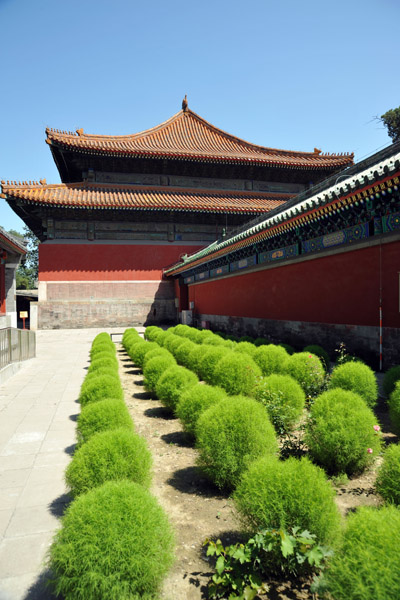
Beijing Confucius Temple |
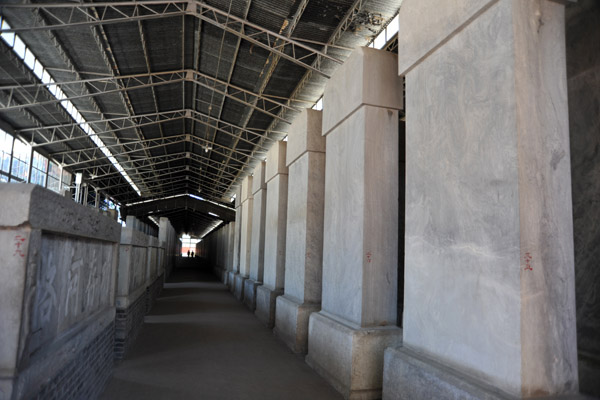
The 13 Confucian Classics engraved on 189 stone tablets during the reign of Qianlong (1735-1799) |
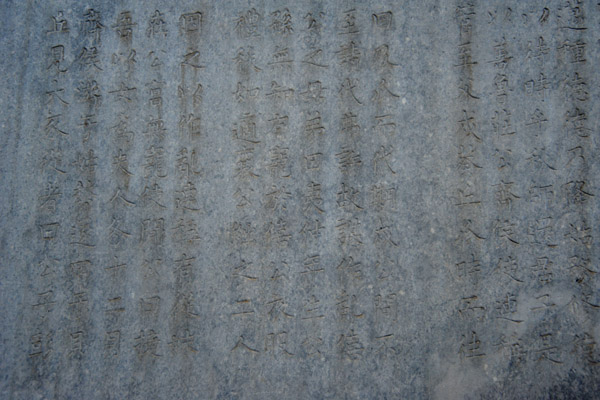
Detail of one of the Qianlong Stone Tablet, Temple of Confucius |

Stone Tablet with engraving, Temple of Confucius |
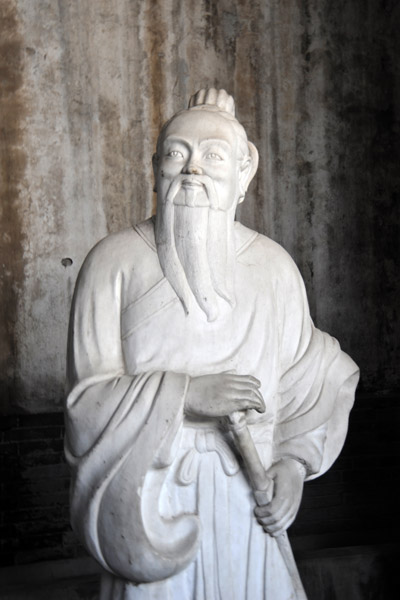
Statue of Jiang Heng, Temple of Confucius |
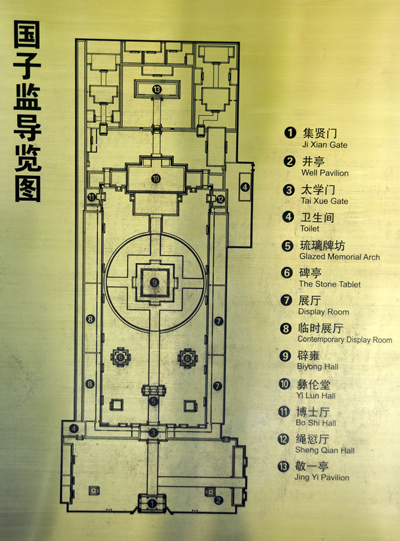
Map of Guozijian - the Imperial College |
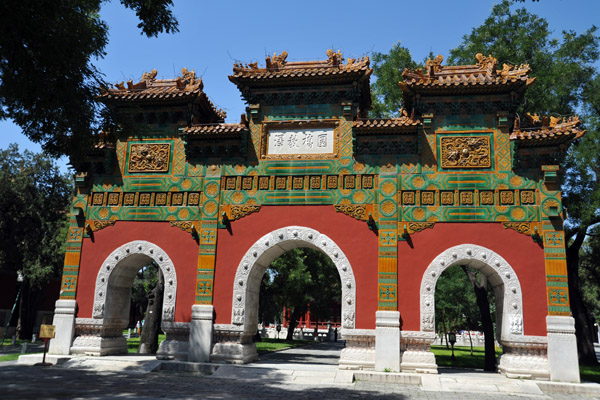
Glazed Memorial Arch built in 1783 during the reign of Emperor Qianlong |
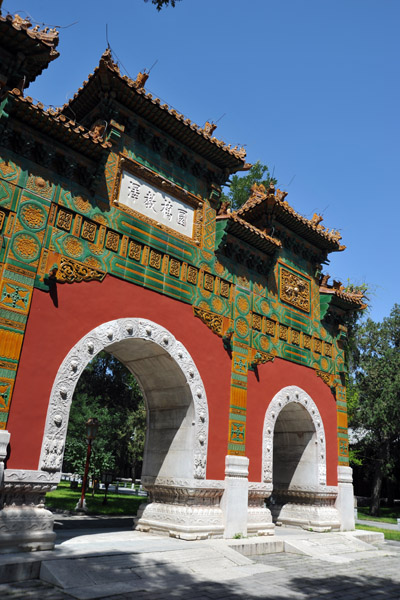
Glazed Memorial Arch at the entrance to the Imperial Academy, Guozijian |
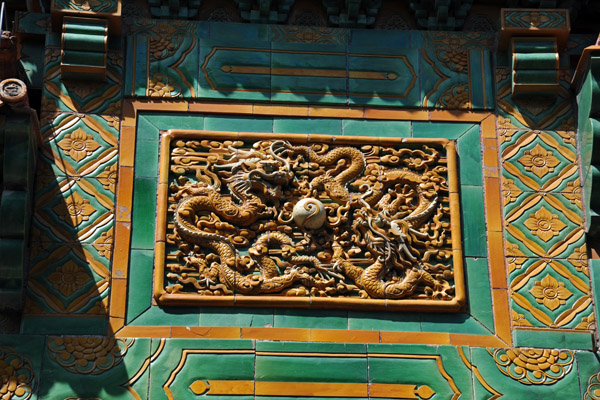
Detail of a panel with two dragons on the Glazed Memorial Arch |
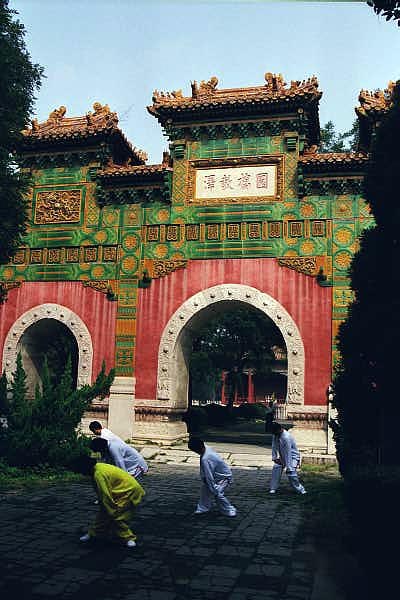
Tai-chi, Imperial College, Beijing |
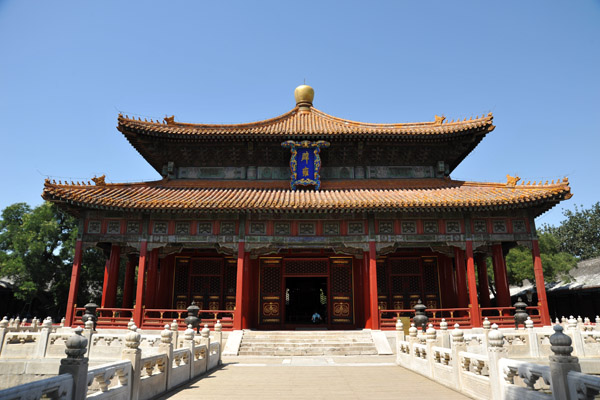
The Guozijian - Imperial Academy/College - is next to the Temple of Confucius |

Bi Yong Hall - Imperial Academy, Beijing |
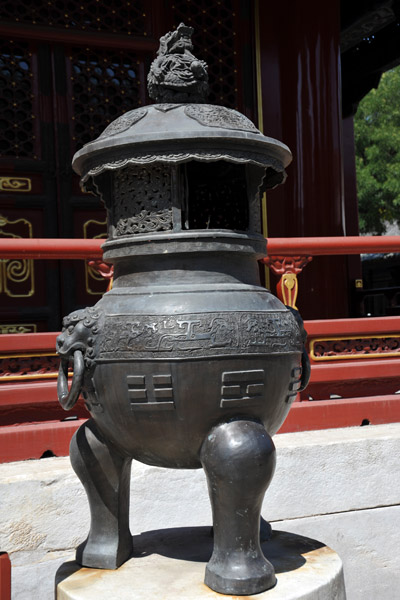
The Imperial College was founded in 1306 |
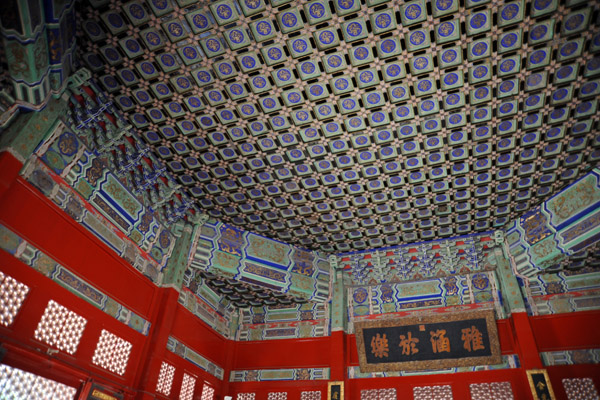
Ceiling of Bi Yong Hall (Biyong Palace), Imperial Academy |
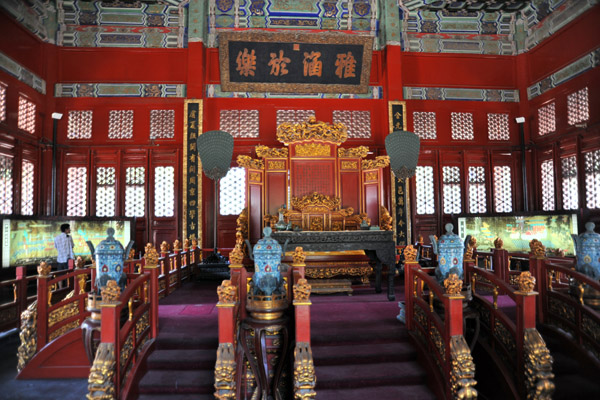
Bi Yong Hall - the Emperor's Reading Room |
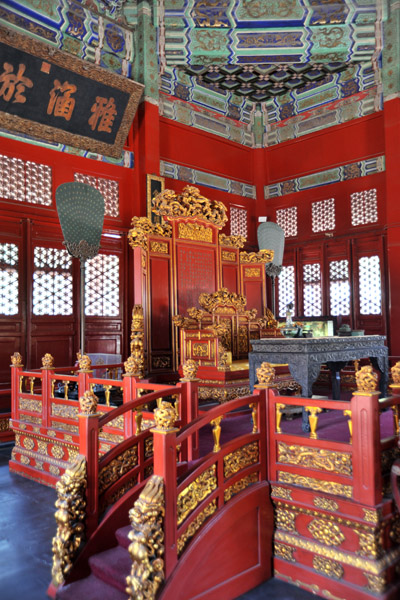
Bi Yong Hall - Imperial Throne |

The Imperial Academy was disbanded in 1898 after nearly 6 centuries of service |
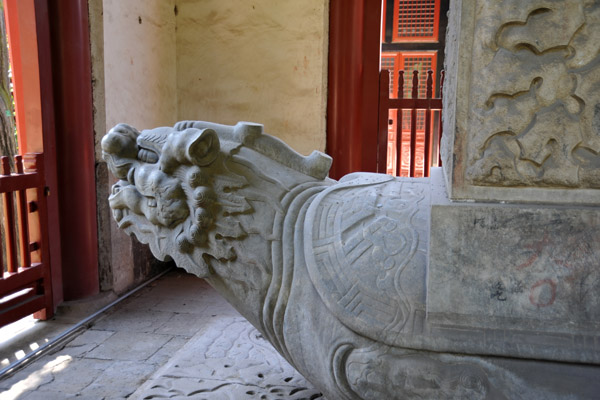
Baxi - stone tortoise supporting a stele, Temple of Confucius |
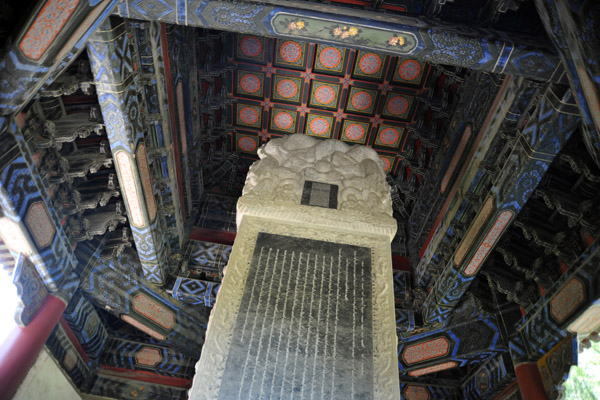
Xi Bei Pavilion, Temple of Confucius |
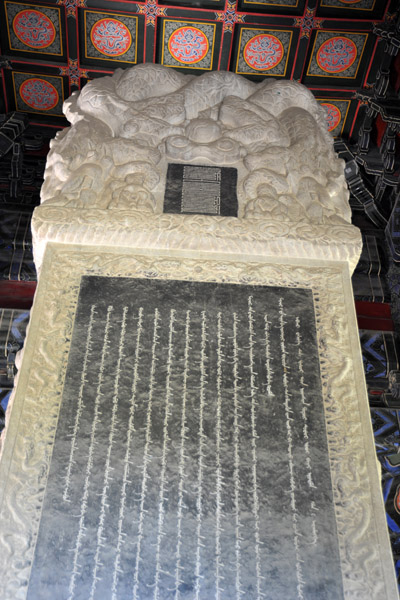
Record of the Completion of the Surrounding Water Project around the Bi Yong Hall |
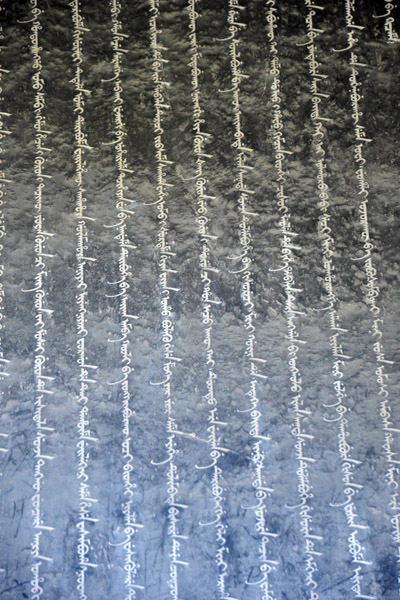
The tablet in the Xi Bei Pavilion is written in Manchu language used in the early Qing Dynasty |
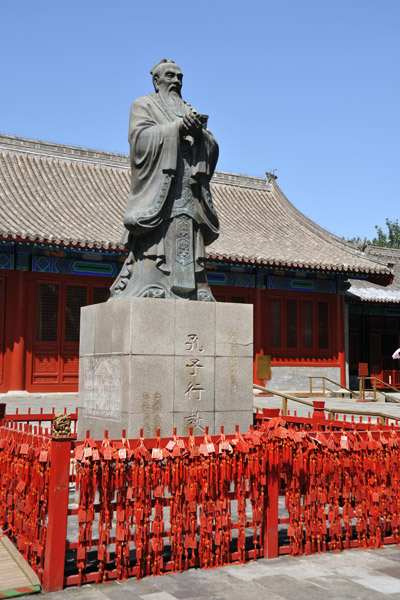
Statue of Confucius, Yi Lun Hall, Imperial College |
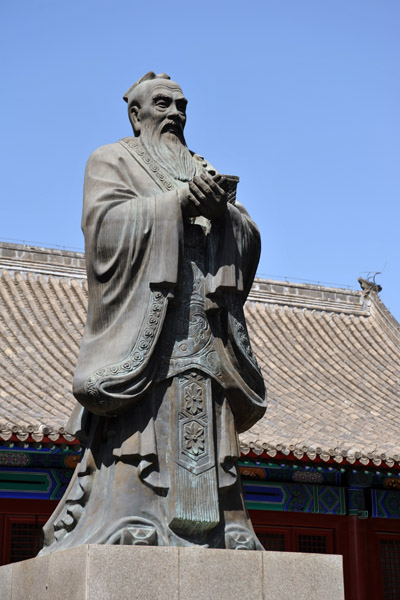
孔子 - Confucius - 北京国子监 |

Imperial College - Beijing |

貔貅 - pí xiū - Auspicious Chinese Winged Lion |
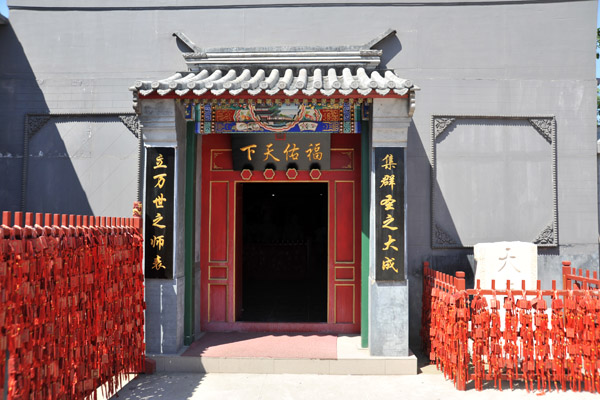
Imperial College, Beijing |
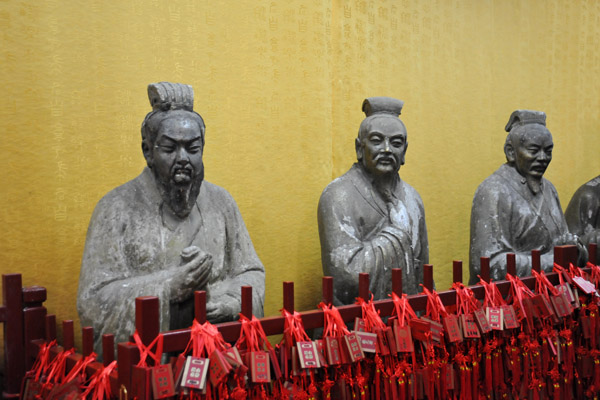
Imperial College, Beijing |
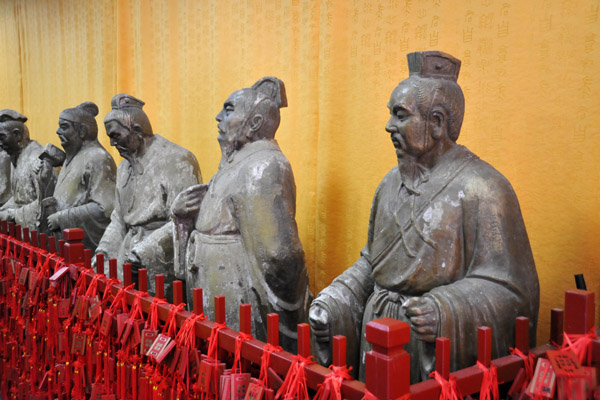
Imperial College, Beijing |
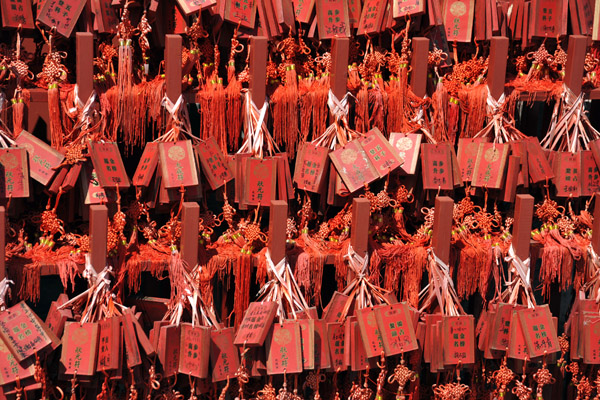
Imperial College, Beijing |
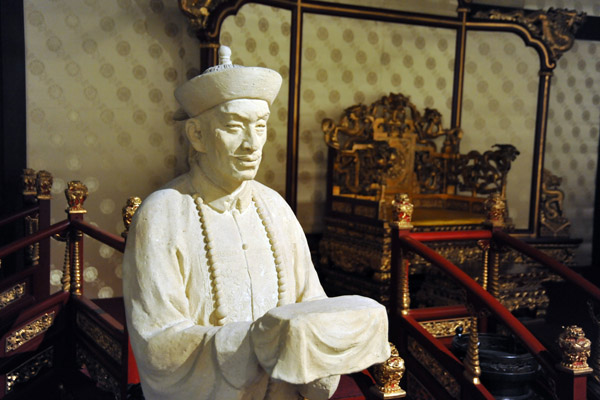
Display at the Imperial College, Beijing |
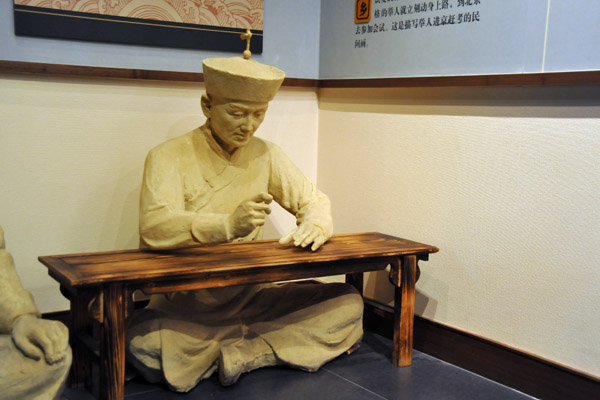
Display at the Imperial College, Beijing |
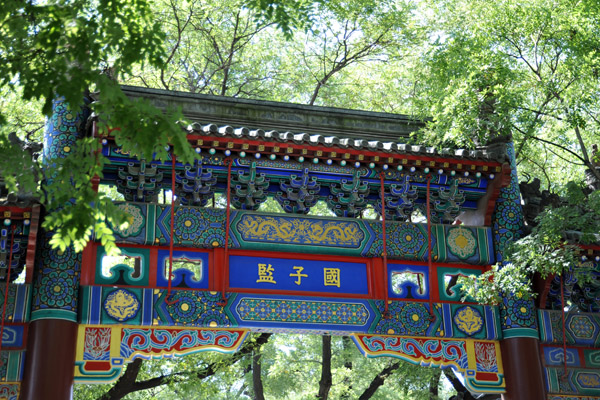
監子國 - Guozijian Street |

Traditional doorway at Guozijian Street 29 |
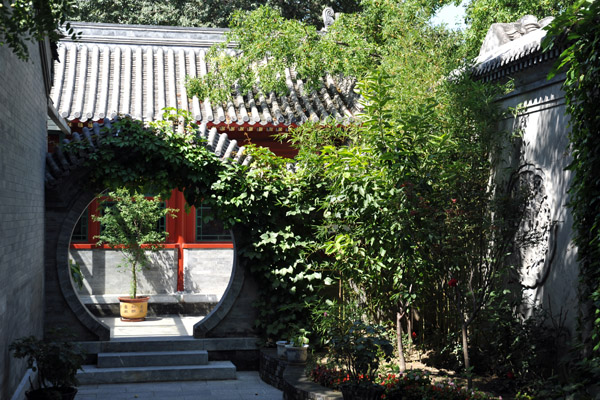
Round entry at of a traditional outer courtyard, Guozijian Street 29 |
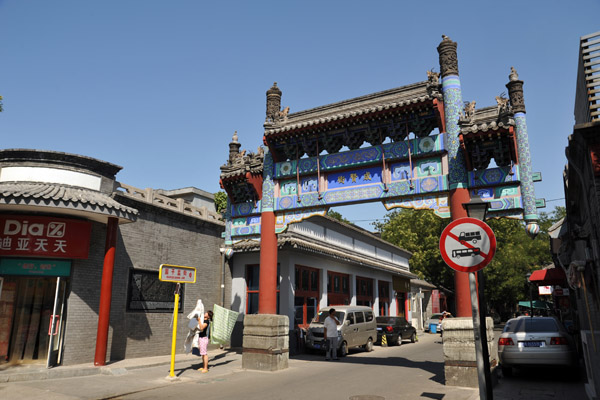
Gate at the western end of Guozijian Street |











